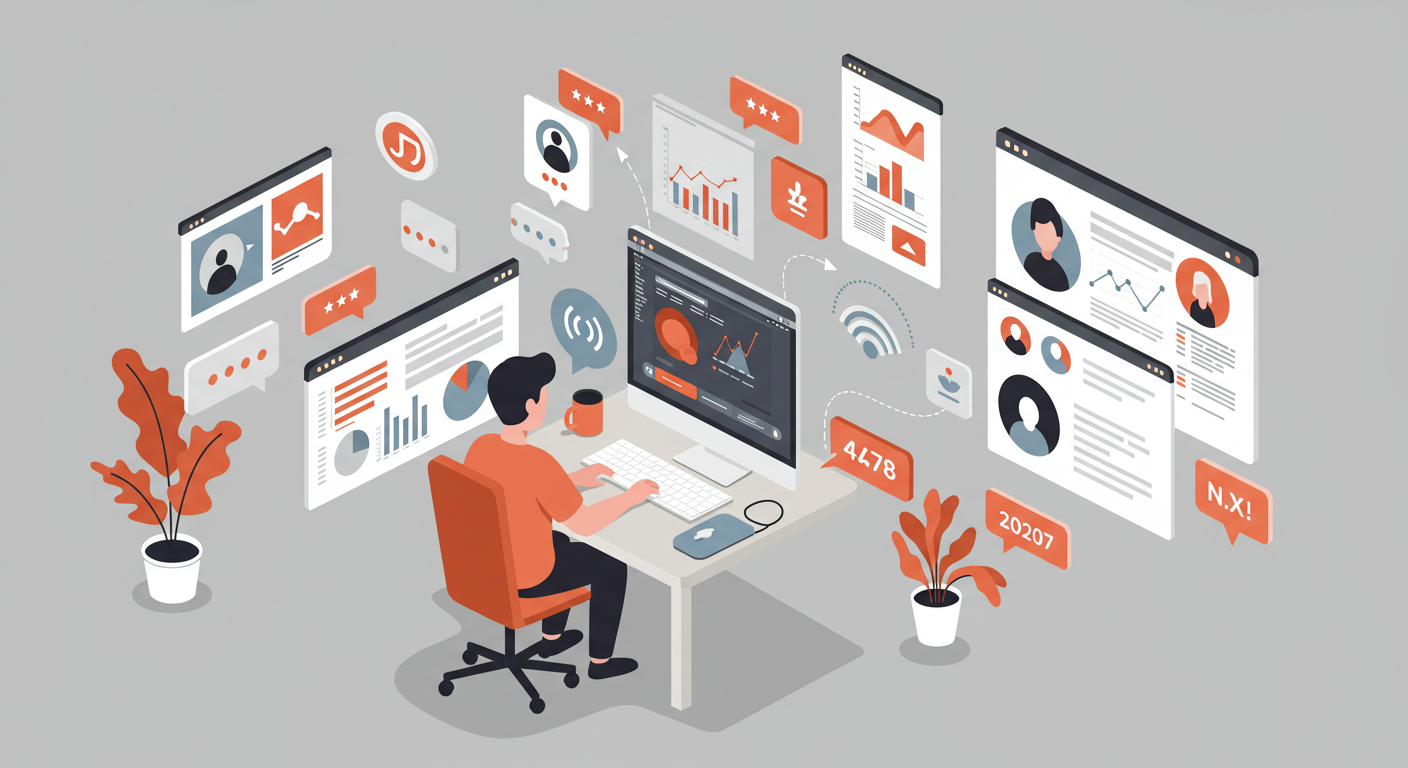Audience segments are dead, long live micro-signals
10-Aug-2025 10:00:00 AM • Written by: Mohamed Hamad

I’m a male in my 40s living in central Montreal. My friend, who's the same age, lives out in the suburbs. According to old-school marketing, we should be seeing a lot of the same ads. We fit the same demographic box, after all. But while he’s searching for home improvement suggestions, I’m on the hunt for the new trendy restaurant in my neighbourhood. He needs a reliable contractor; I need a reservation for Saturday night.
We're not the same buyer, so why would we be in the same audience?
Labels are for Jars, Not People
This is the problem with using labels to define people. For years, marketing has relied on demographics (age, gender, location) to sort customers into neat little boxes. But people are more complicated than that. In a recent Third Wednesday Webinar, I spoke with VP of Growth and Marketing at Imajery, Sanjay Mayar, a veteran in performance marketing, and our conversation really brought home how much this is changing, thanks to AI.
The truth is, segmenting people by demographics is not a scalable or particularly accurate way to predict what they'll do. That’s why many marketers are moving towards frameworks like Valuegraphics, which segments audiences based on what they value, not how old they are or where they live. It’s a step in the right direction, getting us closer to understanding the "why" behind consumer behavior. But now, with AI, we can go even deeper. We can look at the "what"—what people are actually doing, right now.
From Mad Men to Machine Learning
Not too long ago, marketers would sit in a room and build a picture of their ideal customer based on a collection of assumptions. It was a bit of a "Mad Men" approach, where you'd define your audience by their demographic profile and hope for the best.
But AI doesn't care about our assumptions. It cares about actions. It looks at what people do, not just who they are on paper. This marks a fundamental shift in how we approach audience targeting. As Sanjay put it, demographics are no longer the main predictor of what action someone is going to take.
Just because I happen to be, male, over 40, living in the suburbs, doesn't mean that my behaviors and my actions are going to be aligned with every other male who's over 40 who lives in the suburbs. We're not this homogeneous group that just acts and thinks the same way.
- Sanjay Mayar, VP of Growth and Marketing, Imajery
The Power of "Signals"
So, if AI isn't looking at demographics, what is it looking at? The answer is "signals."
Think of signals as digital breadcrumbs. Every time you search for something, watch a video, read an article, or even linger on a product page, you're leaving a clue about your interests and, more importantly, your intentions. AI is incredibly good at following these breadcrumbs and piecing them together to form a picture of what you're looking for right now.
Let's take Sanjay's example of someone looking to buy a car. The old way would be to target men aged 30-55 with a certain income level. The new way is to look for the signals that show someone is actively in the market for a car.
These signals could include:
- Reading reviews of different car models.
- Visiting dealership websites in their area.
- Searching for "best family SUVs 2025."
- Watching YouTube videos on car safety features.
- Using a car loan calculator on a bank's website.
A human marketer could never track all these signals in xreal-time for millions of people. But an AI can. It can see this cluster of activities and understand, with a high degree of confidence, that this person is a potential car buyer. It doesn't matter if they're a 40-year-old man in the suburbs or a 28-year-old woman in the city. What matters is their behavior.
What This Means for Marketers
This shift changes the role of the marketer. It's less about being a master puppeteer, trying to manually pull the strings on dozens of hyper-specific audience segments.
It's more about being a good collaborator with the AI. Here’s what that looks like in practice:
- Trust the Algorithm (a little): It can feel counterintuitive, but sometimes the best thing you can do is broaden your targeting on platforms like Google and Meta. Give the AI a clear goal (like a conversion) and let it do the heavy lifting of finding the people who are showing the right signals.
- Focus on Your Creative: If the AI is handling the "who," then the "what" (your ad, your message, your story) becomes even more important. This is the human element that AI can't replicate. Your creative is what will capture the attention of the audience the AI finds for you.
- Invest in Good Data: The AI is only as smart as the information you give it. This means making sure your conversion tracking is set up correctly and you're feeding the platform accurate data about what a "good" customer looks like for your business.
Final Thoughts
It's ironic, isn't it? We're using some of the most sophisticated technology ever created to get back to a more human and intuitive way of marketing. Instead of shouting at a whole category of people and hoping the right ones listen, we're learning how to have the right conversation, with the right person, at the right time.
The machine is getting better at finding the door. It's still our job to give them a reason to walk through it.
How has AI changed the way you think about your audience? I'd love to hear your thoughts in the comments.
Watch the Webinar
Wunder Webinars
Join the next webinar for marketing insights from industry leaders
Mohamed Hamad
Mohamed Hamad is the founder of Third Wunder, a Montreal-based digital marketing agency, with 15 years of experience in web development, digital marketing, and entrepreneurship. Through his blog, "Thought Strings", he shares insights on digital marketing and design trends, and the lessons learned from his entrepreneurial journey, aiming to inspire and educate fellow professionals and enthusiasts alike.
